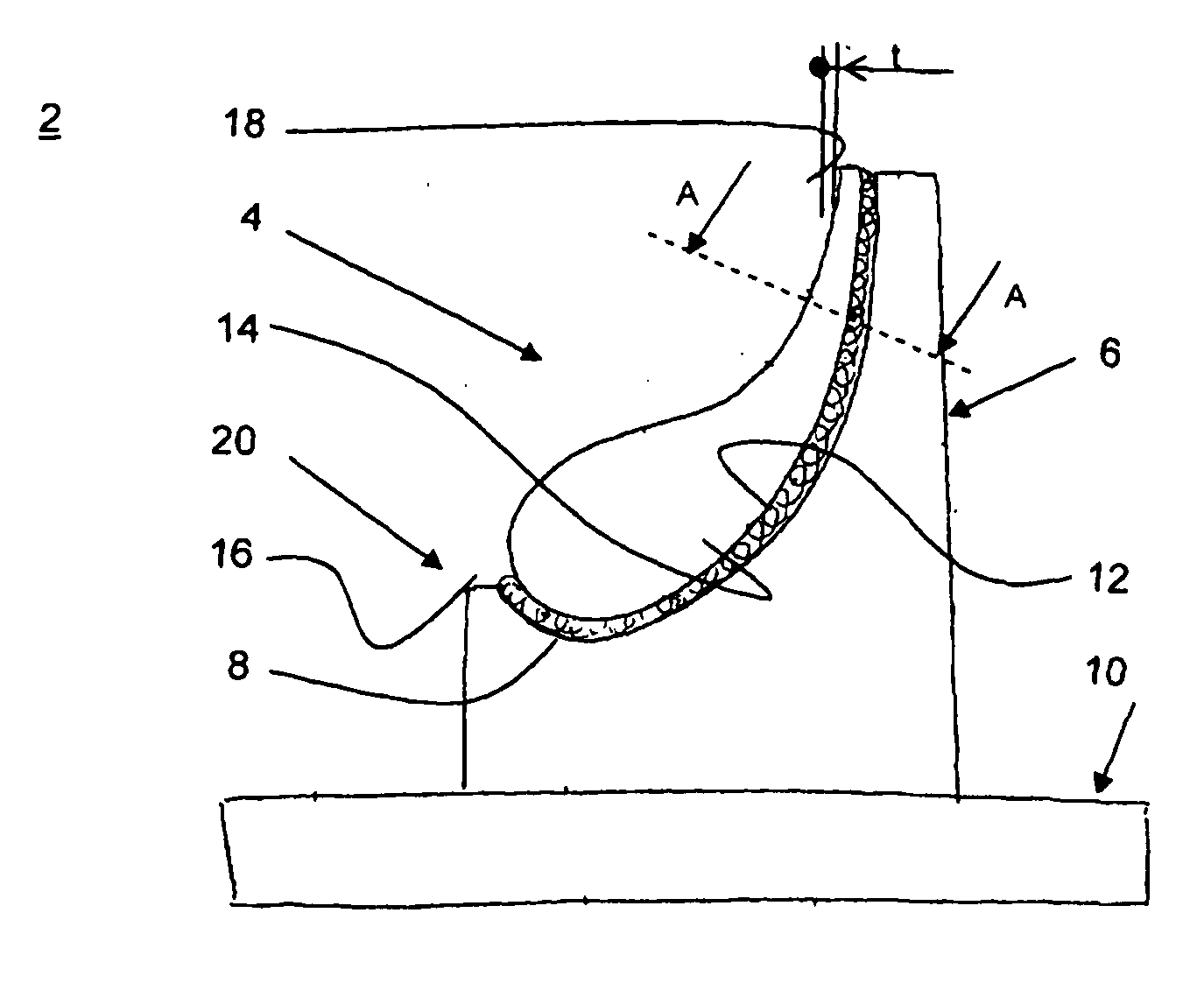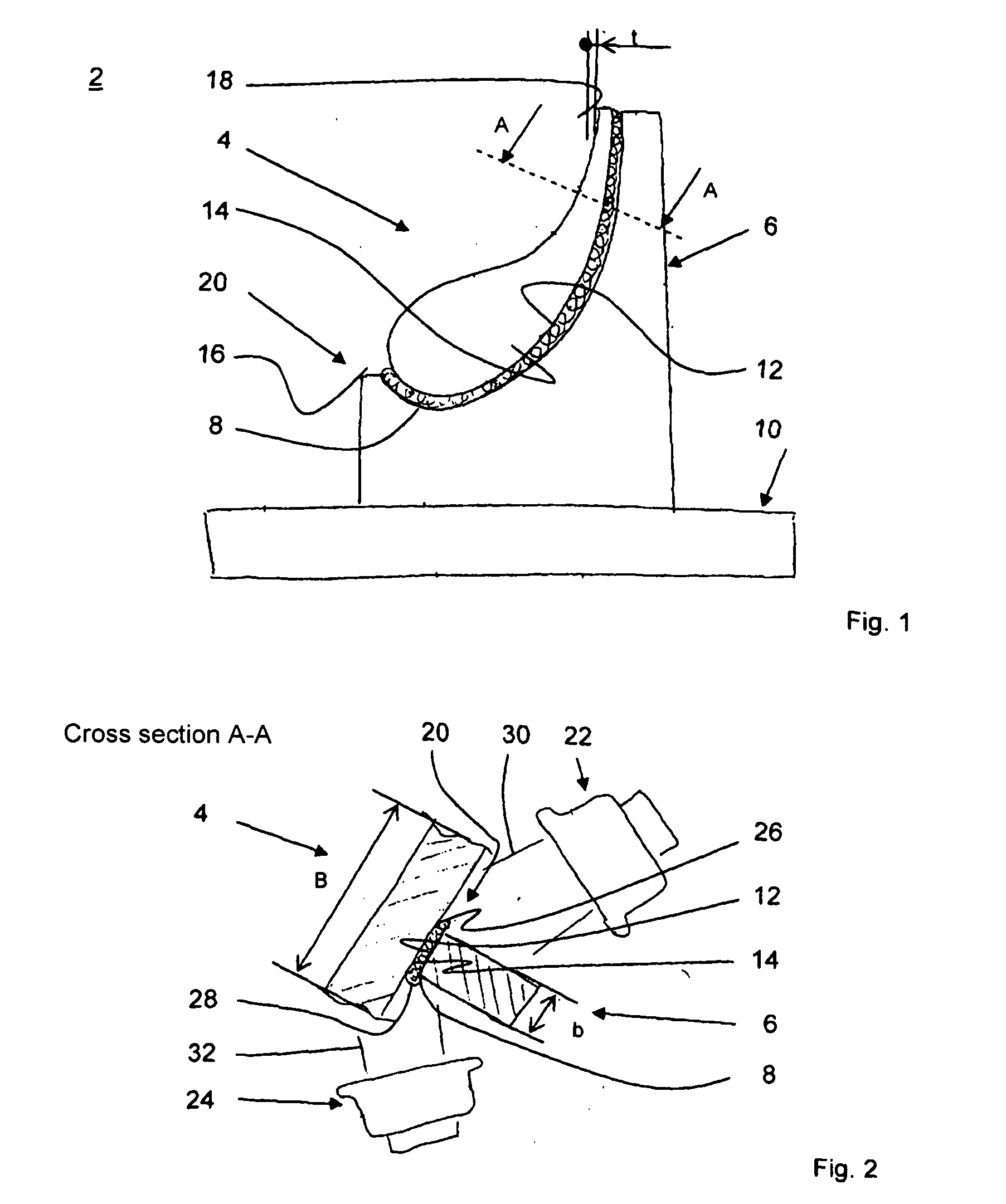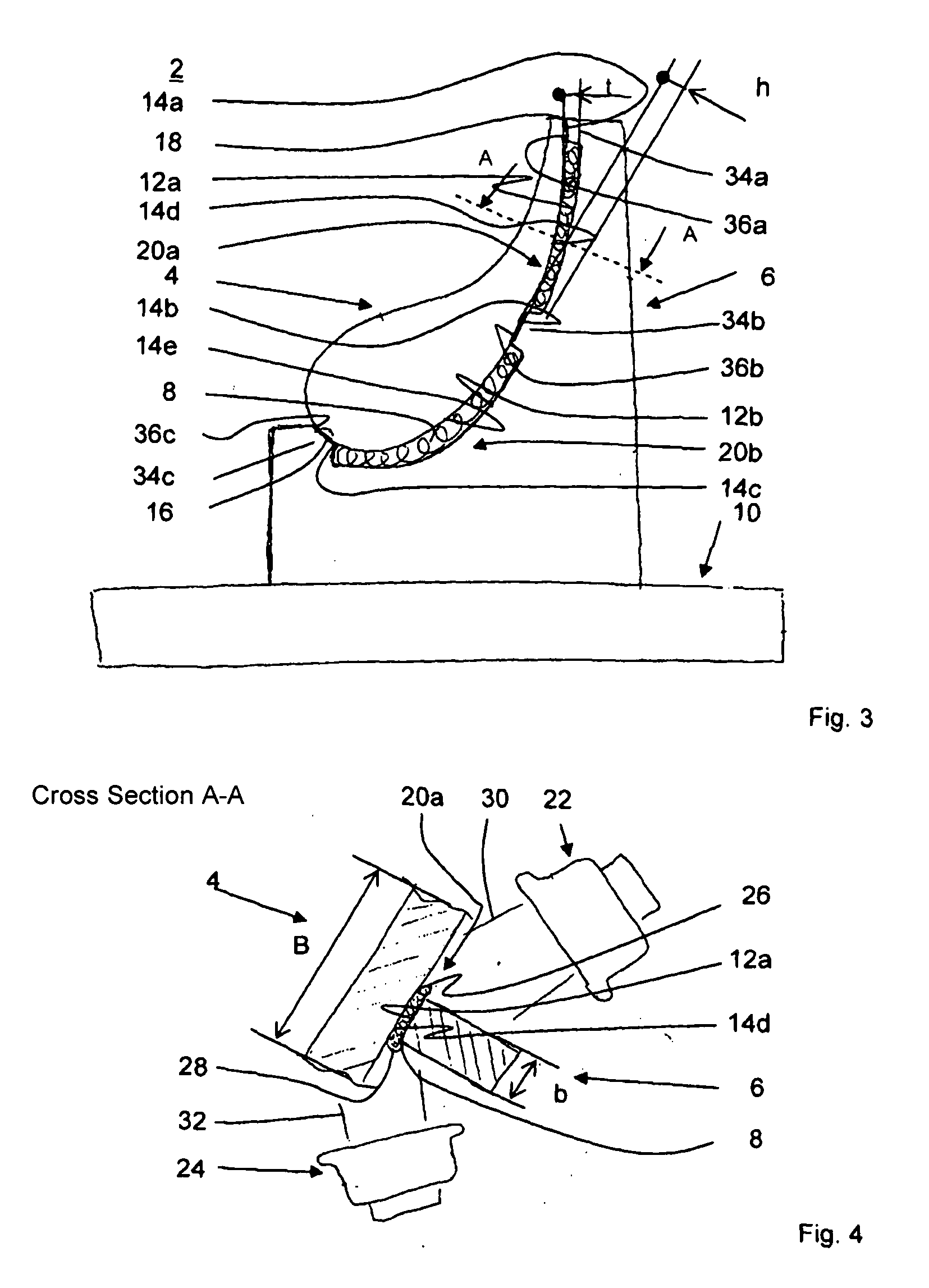Device and Method for Fixing a Component in Position on a Component Carrier
a technology of component carrier and component, which is applied in the direction of glue vessel, manufacturing tools, chemistry apparatus and processes, etc., can solve the problems of carrier surface permeability, weak adhesive bond, and technical complexity required for the device, and achieve strong adhesive bond
- Summary
- Abstract
- Description
- Claims
- Application Information
AI Technical Summary
Benefits of technology
Problems solved by technology
Method used
Image
Examples
Embodiment Construction
[0023]FIG. 1 shows a side view of a first device 2 according to the present invention for fixing a component 4 in position in a component carrier 6 using adhesive bonding. Component 4 is shown exemplarily as a blade of a turbine, in particular of an aircraft engine, and is referred to as such in this and in the further exemplary embodiments. The adhesive bond is based on a radiation-activable adhesive agent 8 that is curable, respectively releasable, in particular, by electromagnetic radiation.
[0024]Component carrier 6 is mounted on a base plate 10 and features a concave, respectively sickle-shaped bonding surface 12 for receiving blade 4. Bonding surface 12 is configured close to the contour of a convex intake-side portion 14 of blade 4 facing it. In the illustrated exemplary embodiment, bonding surface 12 extends from a leading edge 16 of blade 4 to a trailing edge 18.
[0025]Blade 4 is fixed in position using adhesive agent 8 which is placed between bonding surface 12 and intake-si...
PUM
| Property | Measurement | Unit |
|---|---|---|
| structure | aaaaa | aaaaa |
| adhesive | aaaaa | aaaaa |
| area | aaaaa | aaaaa |
Abstract
Description
Claims
Application Information
 Login to View More
Login to View More - R&D
- Intellectual Property
- Life Sciences
- Materials
- Tech Scout
- Unparalleled Data Quality
- Higher Quality Content
- 60% Fewer Hallucinations
Browse by: Latest US Patents, China's latest patents, Technical Efficacy Thesaurus, Application Domain, Technology Topic, Popular Technical Reports.
© 2025 PatSnap. All rights reserved.Legal|Privacy policy|Modern Slavery Act Transparency Statement|Sitemap|About US| Contact US: help@patsnap.com



